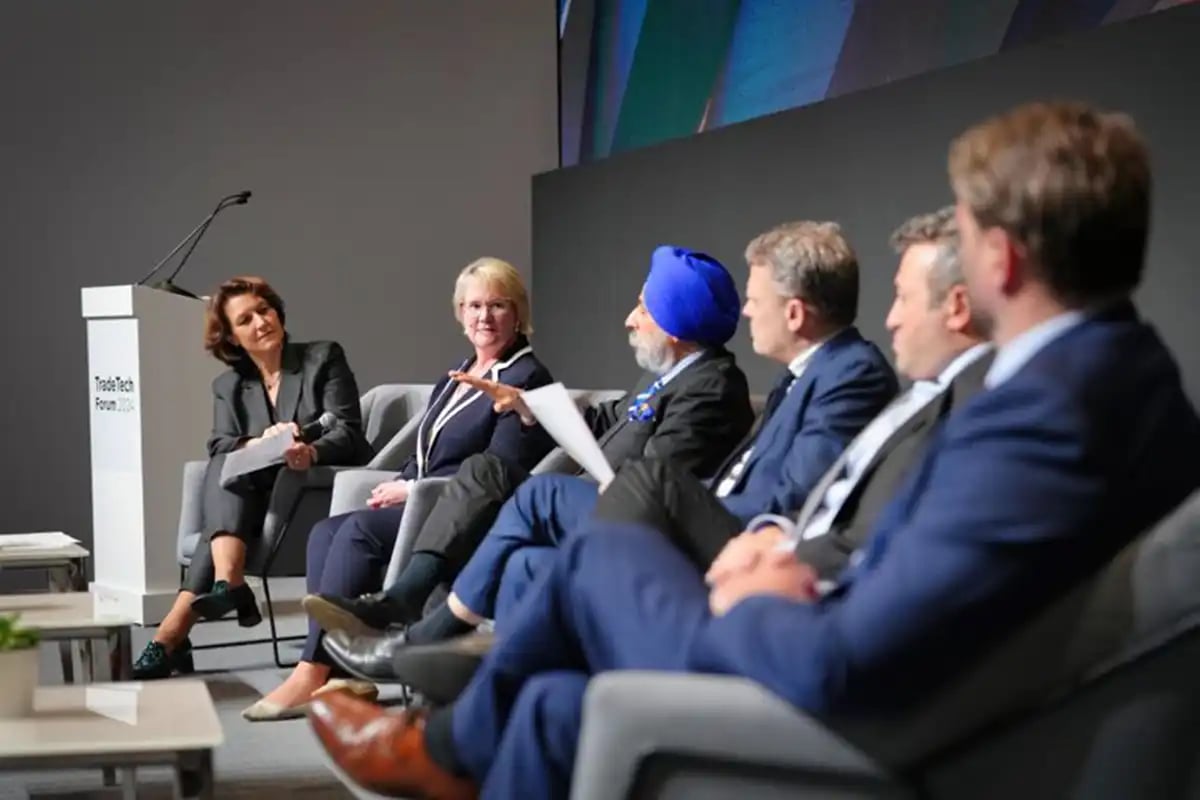The global trading system is undergoing a profound transformation, driven by digital technologies and bold new collaborations. At the forefront of this shift is the World Economic Forum’s TradeTech Forum, which aims to harness innovation for more efficient, inclusive, and sustainable trade.
The TradeTech Forum 2025 is being organized at ADNEC Center in Abu Dhabi, on April 8 and hosted by the UAE Ministry of Economy, Abu Dhabi Department of Economic Development (ADDED), and the World Economic Forum.
In this interview, Sean Doherty, head of International Trade and Investment and member of the Executive Committee at the World Economic Forum, discusses how strategic partnerships with the UAE Ministry of Economy and the Abu Dhabi Department of Economic Development have amplified the initiative’s global reach.
From addressing digital infrastructure gaps and regulatory hurdles to exploring the role of AI in trade governance, Doherty unpacks the frameworks and solutions needed to future-proof global commerce.
How has the partnership with the UAE Ministry of Economy and the Abu Dhabi Department of Economic Development elevated the TradeTech Forum on the global stage?
The World Economic Forum TradeTech Initiative began as a response to the increasing importance of new technology in trade facilitation efforts around the world, as well as to global policy movements to support digitally-enabled commerce.
The UAE Ministry of Economy and the Abu Dhabi Department of Economic Development stepped in at a critical point to scale the work, tighten its focus on practical application and increase its level of ambition.
The UAE’s hosting of the World Trade Organization 13th Ministerial Conference in Abu Dhabi in 2024 provided a springboard to bring the issue to global attention. Partnership with the AIM Congress in 2025 helps bring the TradeTech opportunity and community together with investors and investment policy makers.
Read: Abu Dhabi’s non-oil foreign trade grows to $83.31 billion in 2024 on exports boom
What are the main barriers to the widespread use of digital trade infrastructure, and how can companies and governments work together to get past them?
Companies and governments working to grow the use of digital trade infrastructure face the classic challenges of achieving critical mass to harness network effects. These are compounded by the requirement to work cross-borders, where trust is typically lower.
Clearly, having sufficient capital is one barrier, given the scale inherent in the globalized trading system. Another is ensuring an appropriate match between skills requirements and supply across the diverse trading network.
One approach which has been shown to be effective is to have an open, well-governed non-profit basis to digital infrastructures or architectures, to create an underlying basis of trust on which to build for-profit services. Finally, regulation which is adapted for legacy models may need to evolve to suit new digital trade tools and business models.

AI is reshaping trade, but ethical and regulatory concerns remain. What frameworks are needed for fair and transparent AI adoption in trade?
Various overarching frameworks for AI governance have been put forward – the G7-driven Hiroshima AI policy framework for example. This considers risks and opportunities, provides guiding principles for all actors in the system and a code of conduct for developers.
Key governance issues for fair and transparent AI adoption in trade processes are data access (including privacy and intellectual property elements), the adaptability of AI models and interoperability with different regulatory systems. Regional inclusion is also a consideration, along with suitability for multiple languages, for some of which training data may be sparse. Finally, clear accountability rules are needed for managing potential machine-generated errors and hallucinations.
Can you share cases from the World Economic Forum that demonstrate AI’s impact on trade efficiency and governance?
A relatively early but extremely impactful AI use case in trade has been machine translation. Improving the ability to communicate dramatically increases the ability for humans to buy and sell across borders. Further examples which have seen rapid take-up include marketing lead-generation, documentation management, consignment classification for border compliance and reporting purposes and supply chain analysis.
For more news, click here








